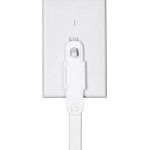How To Get Scratches Out Of Wood Furniture
Wood furniture, prized for its beauty and durability, is susceptible to scratches. These imperfections can detract from the aesthetic appeal of furniture pieces, diminishing their value and visual charm. Understanding the nature of scratches and applying appropriate techniques is crucial for successful restoration. This article provides a comprehensive guide on addressing scratches on wood furniture, covering various methods tailored to different scratch depths and wood finishes.
Before embarking on any scratch removal process, it is essential to assess the scratch's severity. Scratches typically fall into three categories: surface scratches, shallow scratches, and deep scratches. Surface scratches affect only the finish layer, while shallow scratches penetrate slightly into the wood itself. Deep scratches, conversely, extend significantly into the wood, often requiring more extensive repair.
Identifying the type of finish on the furniture is equally important. Common wood finishes include lacquer, varnish, polyurethane, shellac, and wax. Each finish reacts differently to various repair methods, so using the wrong technique can exacerbate the damage. If unsure about the finish type, consulting a furniture restoration professional or testing a small, inconspicuous area is advised.
Addressing Surface Scratches
Surface scratches, the least severe type, are often confined to the finish layer and can often be addressed with relatively simple solutions. These blemishes usually appear as slight hazing or dullness on the surface. Several methods can effectively minimize or eliminate these imperfections.
1. Using a Scratch Concealer Marker or Crayon: These products are specifically formulated to fill and colorize surface scratches. Select a marker or crayon that closely matches the wood's finish color. Apply the product directly to the scratch, working it into the imperfection. Wipe away any excess with a clean, soft cloth. This method is ideal for minor scratches and is particularly effective on furniture with dark finishes.
2. Applying Furniture Polish: High-quality furniture polish can often diminish the appearance of surface scratches by filling them in and enhancing the surrounding finish. Choose a polish compatible with the wood's finish. Apply a small amount of polish to a clean, soft cloth and gently rub it into the scratched area, following the grain of the wood. Buff the area with a clean section of the cloth to restore the shine. Repeat the process if necessary.
3. Using a Walnut: The natural oils in walnuts can help conceal surface scratches, especially on darker woods. Crack open a walnut and rub the nutmeat directly over the scratch, applying gentle pressure. The oils will help darken the scratch and blend it with the surrounding finish. After rubbing the walnut over the scratch, buff the area with a soft cloth to remove any excess oil and enhance the shine. This is a natural and inexpensive method for addressing minor imperfections.
4. Ironing the Scratch (with Caution): This method is particularly suitable for dents accompanied by surface scratches. Place a slightly damp cloth over the affected area. Using a warm iron (set to low), gently iron over the cloth for a few seconds. The heat and moisture will help swell the wood fibers, potentially lifting the dent and reducing the visibility of the scratch. Exercise extreme caution to avoid overheating the wood or damaging the finish. It's imperative to use a protective cloth between the iron and the wood surface.
Repairing Shallow Scratches
Shallow scratches penetrate slightly into the wood grain, requiring more targeted techniques than those used for surface blemishes. These scratches are typically more noticeable and may require filling or refinishing.
1. Using Wood Filler or Putty: Wood filler or putty is a malleable substance specifically designed to fill imperfections in wood. Choose a wood filler that closely matches the wood's color or can be stained to match. Clean the scratched area thoroughly to remove any dirt or debris. Apply the wood filler to the scratch, slightly overfilling it. Allow the filler to dry completely according to the manufacturer's instructions. Once dry, sand the excess filler flush with the surrounding surface using fine-grit sandpaper (220-grit or higher). Be careful not to sand the surrounding finish. Finally, refinish the filled area with a matching stain and finish to blend it seamlessly with the rest of the furniture.
2. Applying Touch-Up Stain or Finish: If the scratch is shallow but has removed some of the stain or finish, a touch-up stain or finish can effectively restore the color and protection. Select a stain or finish that precisely matches the existing one. Apply a small amount of the touch-up product to a fine brush or clean cloth and carefully dab it onto the scratched area. Avoid applying too much, as it can create an uneven finish. Allow the stain or finish to dry completely. If necessary, apply a second coat for more coverage. Lightly buff the area with a soft cloth to blend the repair with the surrounding finish.
3. Using a Steam Iron and Damp Cloth: Similar to the method for surface scratches combined with dents, this involves using steam to raise the wood fibers. Place a damp cloth over the scratched area. Using a steam iron, gently iron over the cloth. The steam will penetrate the wood, causing the fibers to swell and potentially reduce the scratch's depth. Repeat the process several times, allowing the wood to dry between applications. Once the area is dry, assess the scratch's visibility. If necessary, lightly sand the area with fine-grit sandpaper and refinish it with a matching stain or finish.
Dealing with Deep Scratches
Deep scratches represent the most challenging type of damage, as they extend significantly into the wood structure. These scratches often require a combination of filling, sanding, and refinishing to achieve a satisfactory repair.
1. Filling with Wood Epoxy: For deep scratches, wood epoxy provides a durable and long-lasting solution. Wood epoxy is a two-part compound that hardens to a rigid, paintable surface. Clean the scratched area thoroughly. Mix the epoxy according to the manufacturer's instructions. Apply the epoxy to the scratch, slightly overfilling it. Allow the epoxy to cure completely. Once cured, sand the excess epoxy flush with the surrounding surface using progressively finer grits of sandpaper, starting with a coarser grit (e.g., 120-grit) and finishing with a fine grit (e.g., 220-grit or higher). The goal is to create a smooth, seamless transition between the epoxy and the surrounding wood. Stain and finish the repaired area to match the rest of the furniture.
2. Using Wood Veneer (for Significant Damage): In cases of extremely deep or wide scratches, applying a wood veneer patch may be the most effective solution. Wood veneer is a thin sheet of wood that can be glued to the damaged area. Select a veneer that closely matches the wood type and grain pattern of the furniture. Carefully cut the veneer to the exact size and shape of the damaged area. Apply wood glue to both the back of the veneer and the scratched area. Position the veneer patch carefully and clamp it in place until the glue dries completely. Once the glue is dry, sand the edges of the veneer patch flush with the surrounding surface. Stain and finish the veneer patch to match the existing finish.
3. Color Matching and Blending Techniques: Achieving a seamless repair often requires careful color matching and blending. Even if the wood filler or touch-up stain is a close match to the original finish, subtle variations in color can still be noticeable. To address this, consider using artist's oil paints or pigments to tint the filler or stain to achieve a perfect match. Apply the tinted product sparingly and blend it carefully with the surrounding finish. Feather the edges of the repair to create a gradual transition between the repaired area and the original finish. Experiment with different colors and blending techniques until the repair is virtually invisible.
4. Professional Restoration: For valuable or antique furniture with significant damage, seeking professional restoration is often the best course of action. Furniture restoration professionals have the knowledge, skills, and specialized tools to repair scratches and other damage without compromising the furniture's integrity or value. They can also precisely match the original finish and apply advanced techniques to achieve a flawless restoration.
Throughout any scratch removal process, patience and attention to detail are paramount. Rushing the process or using improper techniques can lead to further damage. Always test any cleaning or repair products in an inconspicuous area before applying them to the entire surface. Furthermore, working in a well-lit area and taking frequent breaks can help prevent errors and ensure optimal results. Remember that achieving a perfect repair may not always be possible, especially with older or heavily damaged furniture. However, by following these guidelines, individuals can significantly improve the appearance of their wood furniture and preserve its beauty for years to come.

Tested 5 Ways To Remove Scratches From Wood Furniture A Butterfly House

5 Easy Ways To Fix Scratched Furniture

Get Scratches Out Of Wood Practical Diy Advice

Here S How To Remove Scratches From Wood Furniture

Wood Scratch Repair How To Remove Scratches From Artisan Born

Tested 5 Ways To Remove Scratches From Wood Furniture A Butterfly House

3 Simple Ways To Fix Deep Scratches In Wood Wikihow

How To Fix Scratches In Your Wood Table

6 Proven Ways To Remove Scratches From Wood Furniture

5 Simple Ways To Fix Scratches On Your Wood Furniture Lost Found Decor








